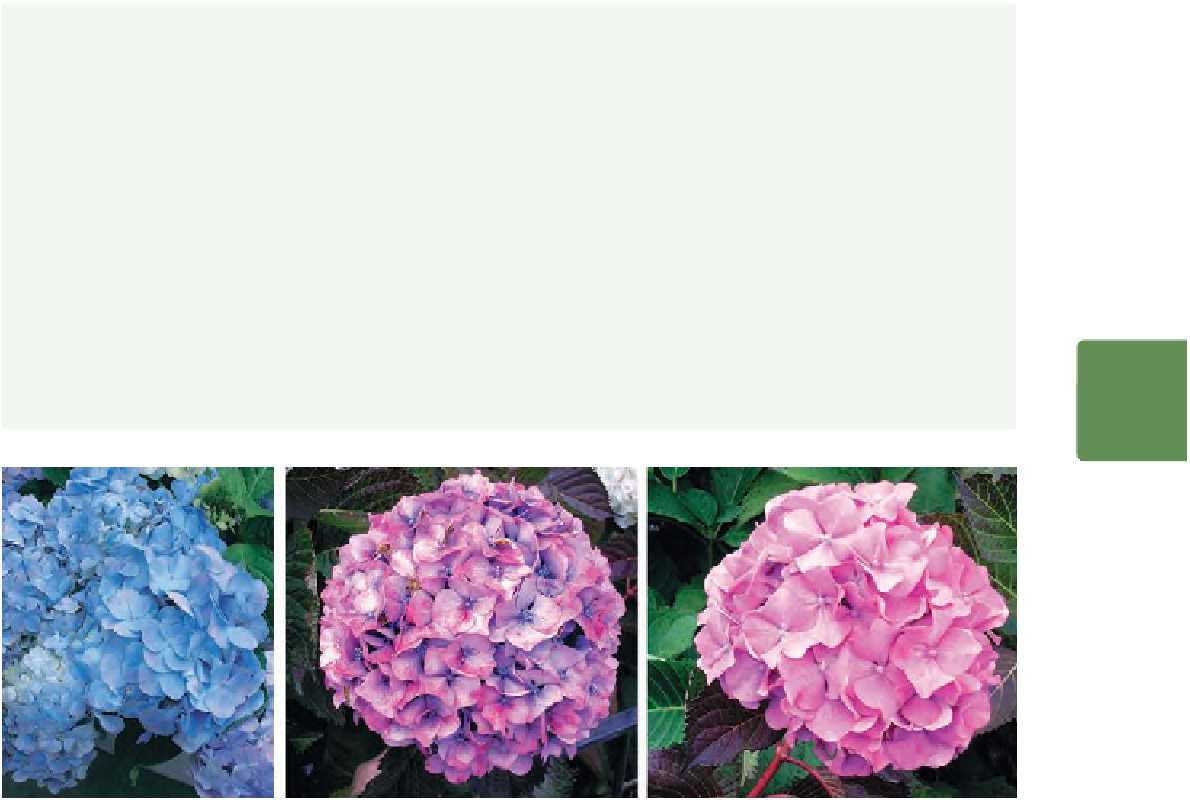Agriculture Reference
In-Depth Information
Table 14.3
Soil pH and plant tolerance
a)
pH below which plant growth may be restricted on mineral soils
Celery
6.3
Rose
5.6
Daffodil
6.1
Raspberry
5.5
Bean
6.0
Cabbage
5.4
Lettuce
6.1
Strawberry
5.1
Carnation
6.0
Tomato
5.1
Chrysanthemum
5.7
Apple
5.0
Carrots
5.7
Potato
4.9
b)
Growth adversely affected in soils greater than pH 5.5
X
Rhododendron
spp,
Camellia
spp.,
Pieris
spp.
X
Blueberries (
Vaccinium corybosum
)
X
Some heathers such as
Daboecia spp.
(some species are more tolerant of lime e.g.
Carnea
spp.)
c)
Hydrangea
X
Tend to be pink in soils above pH 5.9
X
Are blue when grown in soils below pH 5.5
X
In between tend to have a transitional mix of neither one or the other (see Figure 14.9)
14
Figure 14.9
Hydrangeas
. The blue colour of the fl owers depends on the availability of aluminium to the plant;
this element is readily available in growing media with a pH less than 5.5 and gradually less so at higher pH levels
Basic conditions (alkaline) are usually created by
the presence of large quantities of lime ('calcium')
which interferes with the uptake and utilization of
several of the plant nutrients. Calcicoles are adapted
to these conditions and thrive in the limey/chalky
soils. In contrast, calcifuge plants are adapted to
growing in soils with a pH below 5.5; above that the
lime (calcium) present interferes with the uptake and
utilization of many of the nutrients they require.
Soil pH also has important effects on other organisms
besides plants. Beneficial soil organisms are affected
by soil acidity and liming. A few soil-borne disease-
causing organisms tend to occur more frequently
on acid, lime-deficient soils (see clubroot, p. 256),
whereas others are more prevalent in well-limed soils,
such as common scab of potatoes.
The addition of lime ('calcium') usually improves soil
structure because raising pH can create conditions
more favourable for beneficial organisms. This leads
to the decomposition of organic matter, yielding
humus that helps crumb formation in both very sandy
and heavy clay soils (see humus p. 158). Furthermore,
calcium-rich clays tend to crack and crumble more
readily.
Causes of soil acidity
In Britain and Ireland, where over a year the rainfall
exceeds evaporation, the soils tend to become too
acid (creating 'sour soils'). This because the rain
is carbonic acid (see p. 142) which dissolves basic
material, lime, which is then leached from the soil.
Lime is very readily leached from free-draining sandy
soils in high rainfall areas, so they tend to go acid very
rapidly. Calcareous soils (i.e. those containing pieces
of chalk or limestone) do not become acid until all
these base reserves are used up. In addition to the



























































